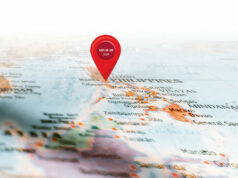ONE THING the pandemic and social distancing has forced on everyone is the use of digital communication. On-line experiences now cover all aspects of life, including previous face-to-face activities such as education and medical diagnosis, as well as banking, meetings, and shopping. Now, even children are encouraged to be glued to the screen for their lessons.
Is this surge of online usage now causing a new kind of traffic jam? Are we seeing too much of the buffering sign — please check your internet connection? As in the physical counterparts of these activities, is there now a digital waiting line?
When calling a customer service number (all lines are busy now) or accessing a link, the switchboard quickly instructs the caller to press the number for the service required (press 8 if you just want somebody to talk to). This directs the customer to queue in the proper lane to transact. He often still needs to wait for a real person, or a robot, to help him after establishing his bona fides: what is your mother’s maiden name; what was her favorite color?
We still remember the waiting line in the old normal.
The reception area is a good indicator of customer patronage, just like a full restaurant with a waiting line outside. Still, any person needing to be physically present for a transaction, even in these times, as in medical procedures or a job interview needs to deal with the waiting experience.
What amenities should the digital processing room provide? How can the queue be served better as humans and robots (combined as “hubots”) line up the customers needing to be served?
Here’s what the digital service provider should pay attention to.
Guide the customer. A sizable segment of online users now for virtual meetings, e-commerce, or digital banking are recent converts. A number are elderly “digital tourists” (Hey, Boomer) unfamiliar with the terrain. They can forget passwords. (Which one am I using for this?) Before automatically locking down the bank account on the third false try, then needing to go back to zero and reestablish access, this tourist has to be alerted. It’s good to send a warning on the second wrong try — go back to your notes and check the right password, sir.
Establish one-stop solutions. Being passed from one contact to another can be stressful. (Oh, you had an unauthorized use of your credit card. You pressed the number for lost card, let me pass you on to a Robot #6.) Call centers should be multi-tasking, unless they’re working from home. Wait, I need to feed my baby.
Avoid countdowns. Maybe because of the performance metric of “processing time” per customer (the shorter, the better), service agents try to rush through the procedures. Even ATMs now have a countdown — get the cash in five seconds. This rush to being served within a certain time can rattle the customer. How he longs for the friendly teller wearing a face mask who can fill in the account number! (Is your mother still in ICU, Sir?)
Leave a document of completed transactions. It’s quite comforting to get a confirmation e-mail that the credit card payment done through online banking has been successfully concluded. This helps in tracking bill payments, especially now when utilities, card companies, and even clubs no longer always send bills through messengers or post.
Can there be a more irritating symbol on the gadget than the buffering wheel? It’s the digital command to wait. There is no indication if the system is actually down — “the information session has expired.” Please try again later.
Still, since the mission statement of most companies seem to deal with becoming a digital organization, it is important to remember that the customers cannot always be expected to keep up with every upgrade. Knowing the customer is a mantra not just for proper servicing (the customer is king) but for understanding what works with him.
The digital tourists, or those who get lost in the online maze, sometimes happen to be old and wealthy. It’s good to elicit feedback from them on their waiting experience — hope you liked the music… or did you prefer OPM?
Tony Samson is Chairman and CEO, TOUCH xda



